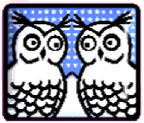

Relationshipwise -


Advice on Making and Maintaining Long Lasting Relationships
Relationshipwise -
Tel: 01452 521008

Dance -
By Humphrey Klinkenberg Dip.PDMSM, Dip.AHyp
Professional Therapist specialising in
Sleep, Relationships, Anxiety and Anger Management.
We often hear of dances like the sensual Rumba or the sexy Salsa being called a dance of love, but what if I told you that I believe that popular ballroom and Latin dance is the ultimate language of love.
Let me explain.
As a professional Relationship Therapist, and someone who has enjoyed ballroom and Latin dancing for many years I have seen how dance can really bring couples together. Indeed, my wife and I learned to dance when we were in our twenties, and I believe that our joint interest in dancing together has positively contributed to our 29 years of happy marriage. Plus as a bonus, helped keep us fit and given us an active social life.
What makes a successful relationship?
As a Relationship Therapist I have often been asked what makes a successful marriage or long term relationship. Whilst there are many contributing factors, my first response is always communication. However, the communication I am talking about is far more than occasionally saying ‘I love you’ and the annual Valentine’s card. Communicating love involves something very special that Relationship Therapists call ‘The Languages of Love’.
Dance that involves two people in close, often intimate contact, is one of the few activities that ticks all of the Love Languages boxes.
The Languages of Love are:
- Quality Time
- Words of Affirmation
- Acts of Service
- Physical Touch
- Receiving Gifts
You can find more detailed information on these at www.relationshipwise.co.uk.
Briefly, everyone has a primary and secondary love language from the above list. Your personal love language is how you need love to be communicated to you.
Problems often occur in relationships when the partners have different love languages. This lack of love communication may cause one partner to feel unloved, even when the other partner believes they are making special efforts to show their love.
Here is an example of a relationship with love communication problems:
Ann and John have been married for three years. Ann’s primary love language is ‘Acts of Service’ but her partner John’s is ‘Receiving Gifts’. Ann is always cooking wonderful meals as an ‘act of service’, while John is always buying special gifts to Ann.
John does not understand that Ann’s acts of service are her way of showing her love, so John just eats the meals without comment or thank you. Ann takes the gifts John gives her but does not bother opening them or showing her appreciation because she did not really want them.
Both Ann and John are expressing their love in the way they wish to receive love themselves, not understanding they are using a language their partner does not understand. John loves receiving gifts so he expects Ann to love them too. Ann really appreciates someone doing things for her so she expresses her love by doing things, like cooking wonderful meals, for John. They are talking different love languages!
How Dance Ticks All The Boxes
No matter what your primary and secondary languages of love are, dancing will give
you all you need to communicate love to your partner -
Quality Time: When a couple dance together they are giving quality time to each other, especially where you only dance together and avoid swapping partners.
Acts of Service: Dancing and working together in a give and take manner, learning and helping each other with the steps, are all acts of service.
Physical Touch: All ballroom and Latin dances offer physical contact. This is especially true for close contact dances like the Rumba or the Argentine Tango.
Words of Affirmation: As you learn to dance you naturally get better at dancing and provide many opportunities to offer words of affirmation, telling your partner how good they are, how much you appreciate them, etc.
Receiving Gifts: Some people feel special when they are given personal gifts. Dancing provides many opportunities for gifts of tickets to dances, lessons, new dance shoes and outfits.
How to Use Dance To Improve Your Relationship
Firstly you both need to agree to give it a try. Many men are reluctant to dance, I know that I was when I first started, but once I started to learn I realised that I really enjoyed it, and even gave up badminton to give more time to dancing.
Next find a good dance school. As you are doing this for the benefit of your relationship, avoid those dance schools that insist that you change partners. You need to dance together so insist that you spend most of your time dancing with your partner.
It is worth travelling to the right dance classes. My wife and I go to ‘Dance at 8’ who provide classes in both ballroom and Latin in Worcestershire, Herefordshire and North Gloucestershire. See www.danceat8.com. You may need to phone around to find the right local dance school for you.
If you want to learn just one dance that’s fine. There are a lot of dance schools that specialise in just one dance, for example; Lindy Jive, Balboa, Salsa or Argentinean Tango, but do check that they allow you to stay with your partner. Many expect you to change partners in the belief that this ‘makes you a better dancer’, which is not your first priority.
Try to attend classes every week, and try to practise your dancing at home or at local dances. You will find many other couples doing just the same. Some will be very good dancers, but most will be like you practising the steps learned at a local dance class.




Copyright:
This article may be reproduced, either in total or in part, but all references and links must be retained unaltered and clear reference made back to www.relationshipwise.co.uk as the source.